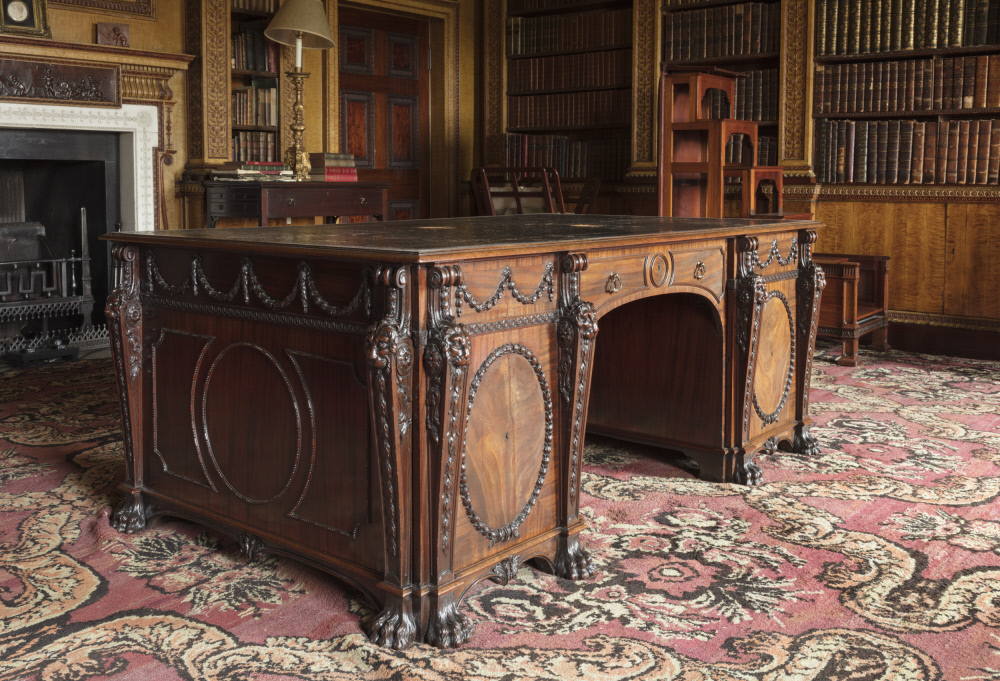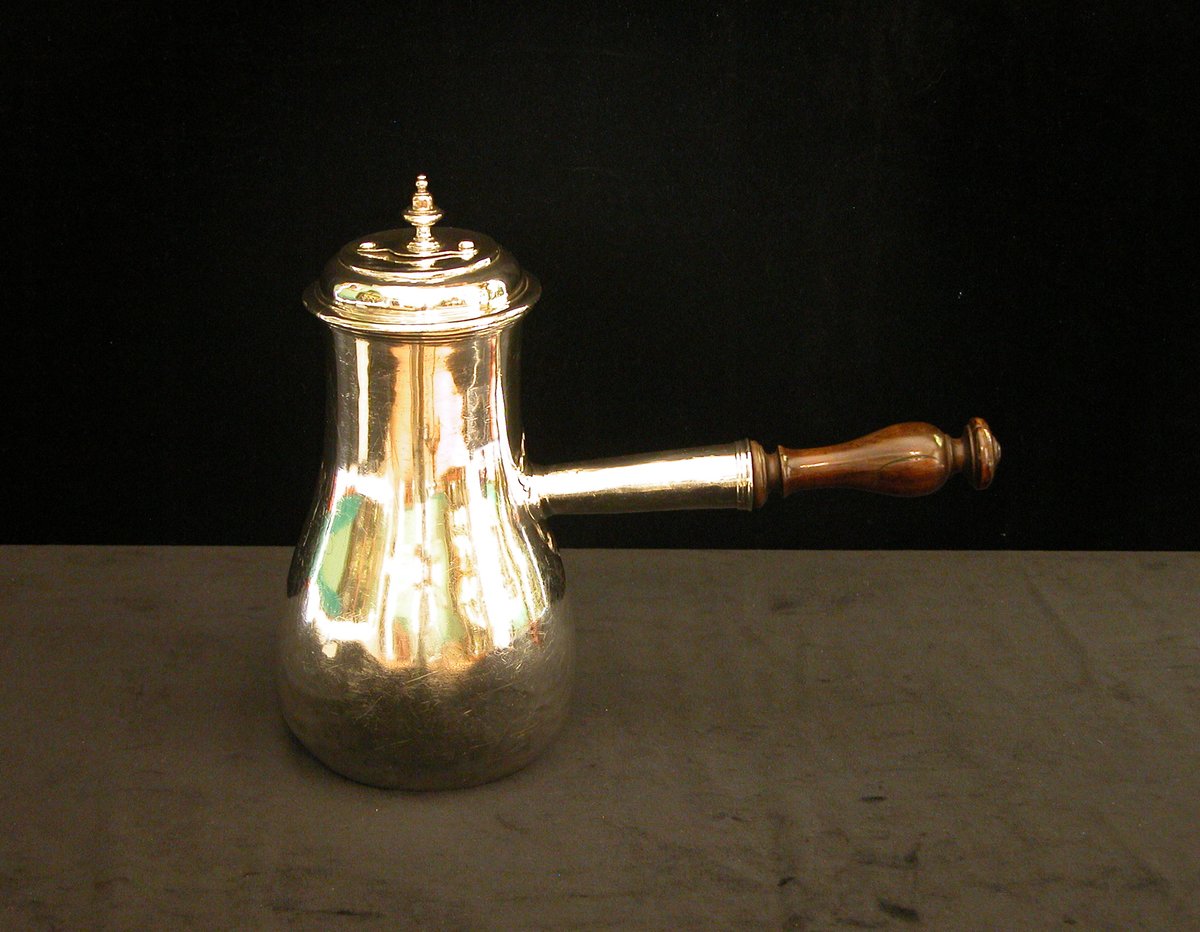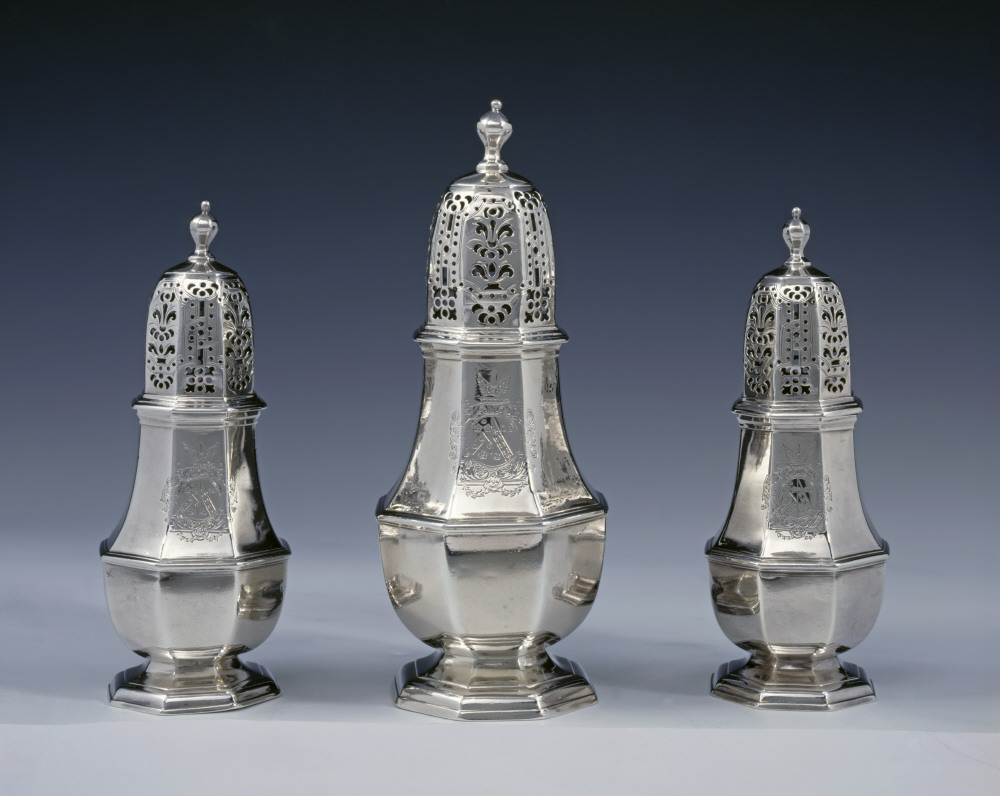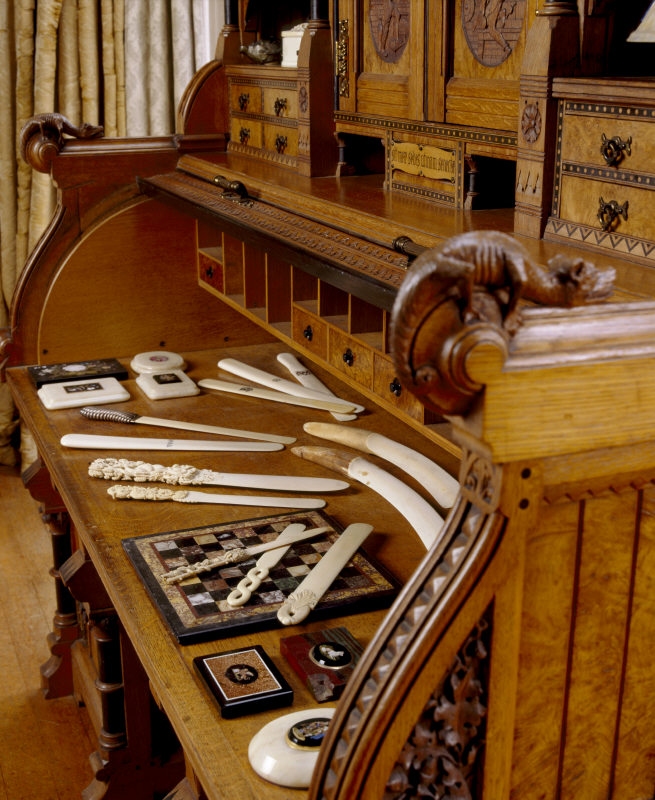Caribbean mahogany furniture was the height of 18th-century fashion, but this luxury material came at a human cost.
Mahogany trees were felled by enslaved Africans in dangerous virgin rainforest and shipped back to Britain to be made into fine furniture.
Mahogany trees were felled by enslaved Africans in dangerous virgin rainforest and shipped back to Britain to be made into fine furniture.
Chocolate was consumed in 18th-century Europe as a sweetened drink. Raw cocoa beans and sugar cane were grown by enslaved Africans on American plantations.
Chocolate pots, like this from Ickworth, are a reminder of the bitter history of this popular confection.
Chocolate pots, like this from Ickworth, are a reminder of the bitter history of this popular confection.
Growing and processing sugar was labour intensive, and Europe’s sweet tooth fuelled the slave trade from the early 16th century.
The wealthy served their sugar from ornate casters like these at Dunham Massey.
The wealthy served their sugar from ornate casters like these at Dunham Massey.
By the mid-1800s, ivory exports from West Africa boomed, satisfying new fashions for ivory piano keys, billiard balls and trinkets.
Traders from Egypt and North Africa travelled in search of elephants, kidnapping local people to serve as ivory bearers, servants, and concubines.
Traders from Egypt and North Africa travelled in search of elephants, kidnapping local people to serve as ivory bearers, servants, and concubines.
This September, we’re sharing a report exploring the connections of slavery and colonialism to the places we care for.
Discover more about how we’re working on this with local and global communities, partners and experts: http://ow.ly/DJgn30r5MIq ">https://ow.ly/DJgn30r5M...
Discover more about how we’re working on this with local and global communities, partners and experts: http://ow.ly/DJgn30r5MIq ">https://ow.ly/DJgn30r5M...

 Read on Twitter
Read on Twitter





